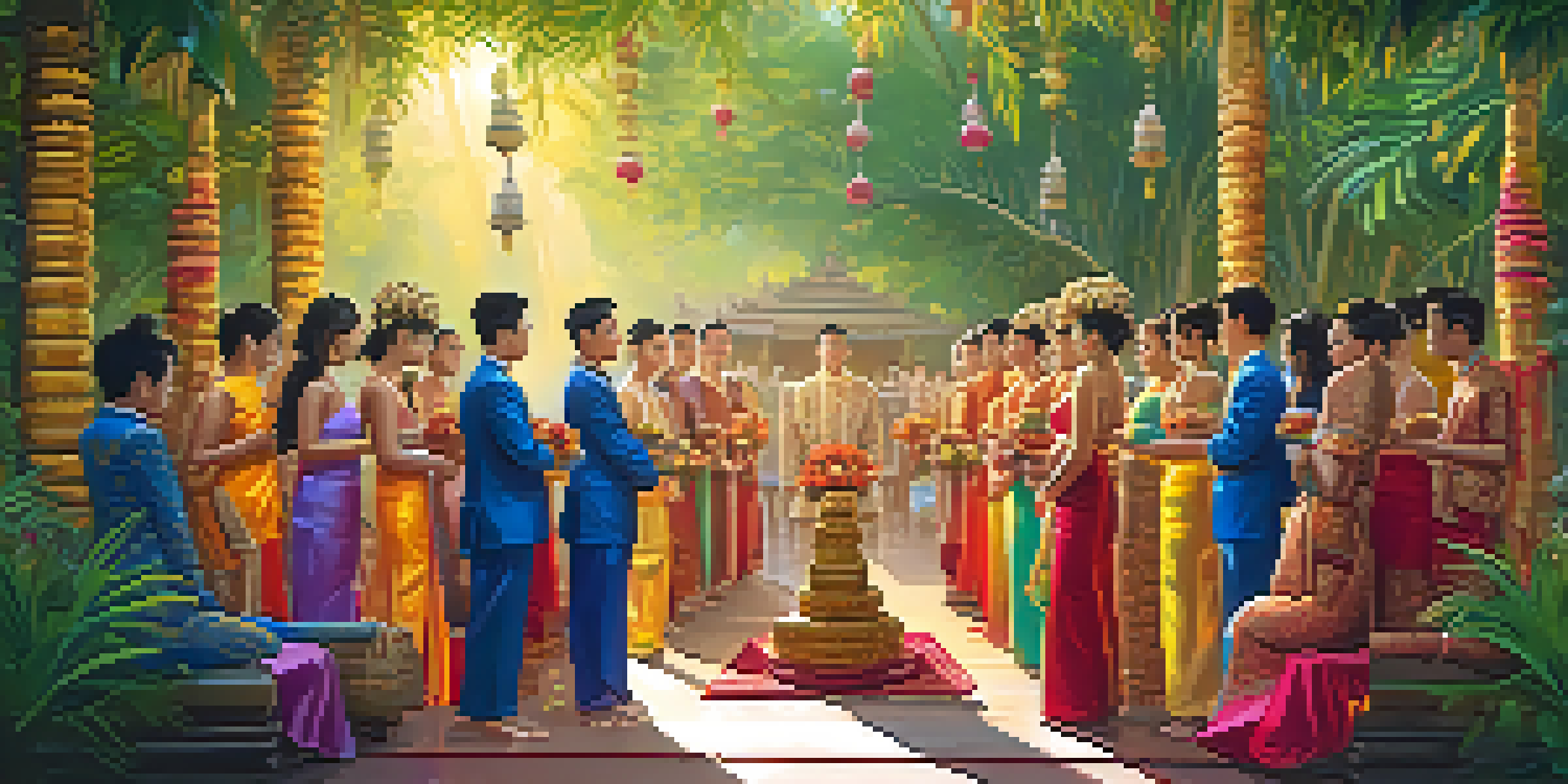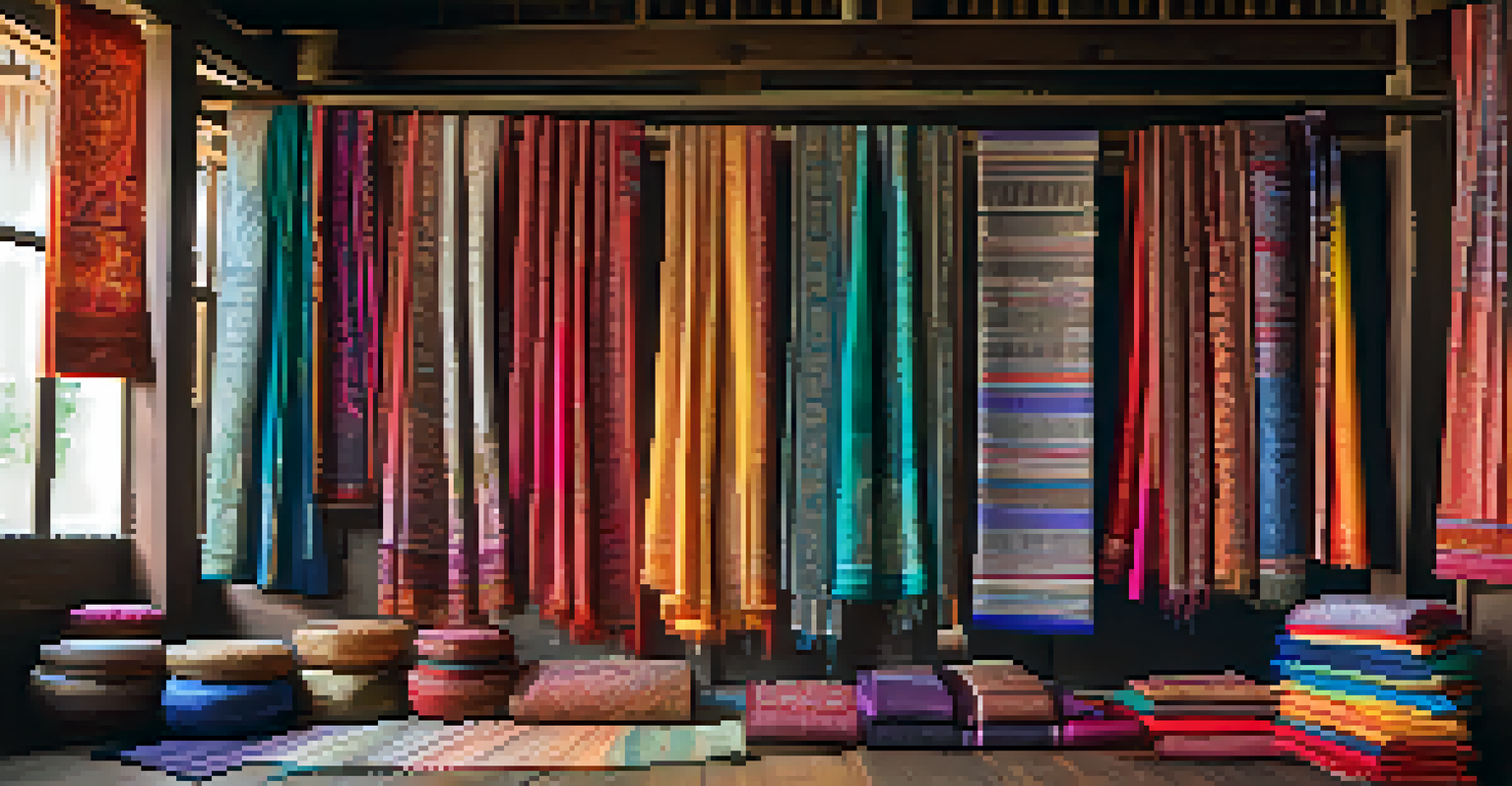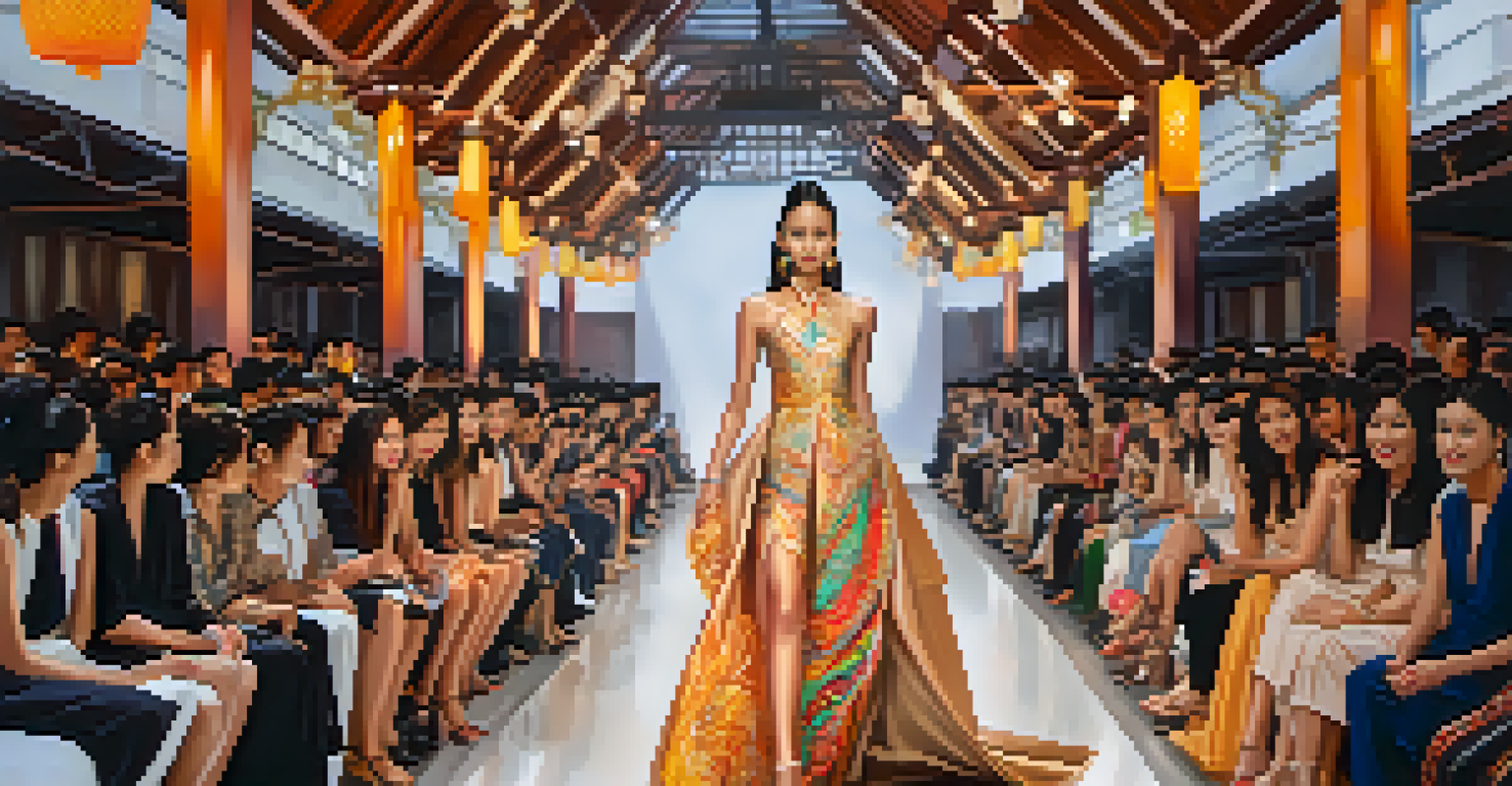Exploring the Cultural Significance of Traditional Thai Dress

Understanding Traditional Thai Dress: A Cultural Overview
Traditional Thai dress, or 'Chut Thai,' is more than just clothing; it's a vibrant expression of Thailand's rich cultural heritage. Each piece tells a story rooted in history, showcasing the artistry and craftsmanship that have been passed down through generations. The attire varies significantly across Thailand's regions, reflecting diverse influences and traditions.
Clothing is a form of self-expression. It is how we show the world who we are and what we believe in.
In essence, Chut Thai is a symbol of identity, representing both social status and regional pride. From the elegant 'Chut Thai Phra Ratcha Niyom' worn by royalty to the more casual 'Chut Thai Chao Khao' typical for everyday wear, each style carries its own significance. Even the colors and patterns used in fabrics can convey messages about the wearer's social standing and occasion.
As we delve deeper into the specifics of Thai dress, we'll uncover the intricate details that make it a vital component of Thai culture. Understanding these garments allows us to appreciate the artistry and meaning woven into every thread.
The Role of Colors and Fabrics in Thai Attire
Colors and fabrics play a crucial role in traditional Thai dress, often reflecting the wearer's mood, social status, and even the occasion. For example, bright colors like yellow and orange are commonly associated with joy and celebration, while darker hues may denote mourning or respect. The choice of fabric also carries significance, with silk being a popular material that symbolizes luxury and heritage.

Thai silk, known for its beautiful luster and soft texture, is a prestigious fabric that has been woven into the fabric of Thai culture for centuries. It often features intricate patterns and designs, each with its own meaning. For instance, the 'sangwan' pattern is believed to bring good fortune and prosperity, making it a favorite for ceremonial attire.
Cultural Significance of Chut Thai
Traditional Thai dress, or 'Chut Thai,' serves as a vibrant expression of Thailand's cultural heritage, reflecting social status and regional pride.
Through the lens of colors and fabrics, we can see how traditional Thai attire serves not just as clothing, but as a way to communicate personal and cultural narratives. This rich tapestry of meaning adds depth to the visual splendor of Thai dress.
Regional Variations: Exploring Thailand’s Diverse Attire
Thailand's geographical diversity has led to a wide array of traditional clothing styles, each unique to its region. For instance, the northern region is famous for its intricate hill tribe textiles, which feature vibrant colors and unique patterns. In contrast, the southern region showcases lighter fabrics that are more suited for the tropical climate, often adorned with floral motifs.
Fashion is the armor to survive the reality of everyday life.
In central Thailand, particularly in Bangkok, the 'Chut Thai Phra Ratcha Niyom' is often worn during formal occasions, symbolizing elegance and grace. This formal style is distinct from the more relaxed, everyday wear found in rural areas, where comfort and practicality take precedence.
These regional variations highlight the adaptability and creativity of Thai culture, allowing it to thrive in different environments. Each style tells its own story, making the exploration of traditional attire a fascinating journey through Thailand’s cultural landscape.
The Influence of Religion on Traditional Thai Dress
Religion, particularly Buddhism, plays a significant role in shaping traditional Thai dress. Many garments are designed with modesty in mind, reflecting the values of humility and respect ingrained in Buddhist teachings. For instance, women often wear long skirts and blouses that cover the shoulders, symbolizing propriety.
Certain colors are also associated with specific days of the week, which has roots in Buddhist beliefs. For example, wearing yellow on a Monday is considered auspicious as it is linked to the King, who was born on a Monday. This connection between attire and spirituality adds another layer of meaning to traditional dress.
Role of Colors and Fabrics
Colors and fabrics in traditional Thai attire convey personal and cultural narratives, with specific hues and materials symbolizing various meanings.
As we explore the intersection of religion and fashion, it becomes clear that traditional Thai attire is not just about aesthetics; it's a reflection of the spiritual beliefs that permeate daily life in Thailand. This deep connection enriches the cultural significance of each garment.
Traditional Thai Dress in Ceremonial Contexts
Ceremonial occasions in Thailand are often marked by the wearing of traditional dress, highlighting its importance in cultural rituals. Weddings, funerals, and festivals each have specific attire that reflects the significance of the event. For example, during weddings, the couple may wear elaborate Chut Thai, symbolizing their union and respect for tradition.
Festivals like Songkran, the Thai New Year, also see a resurgence of traditional attire as people celebrate their heritage. During this time, families often don colorful garments, participating in cultural activities that honor their ancestors and the spirit of renewal.
By wearing traditional dress during these significant moments, individuals not only connect with their heritage but also foster a sense of community and continuity. The garments serve as a bridge between the past and present, reinforcing the values and traditions that shape Thai identity.
Modern Interpretations: Traditional Dress in Contemporary Fashion
In recent years, there has been a resurgence of interest in traditional Thai dress, leading to exciting modern interpretations. Designers are creatively blending traditional elements with contemporary styles, making Chut Thai more accessible and appealing to younger generations. This fusion showcases the versatility of Thai attire, proving that tradition can seamlessly coalesce with modern fashion.
Events like Bangkok Fashion Week often feature collections that celebrate Thai culture, with designers incorporating traditional fabrics and designs into their runway shows. This not only promotes local craftsmanship but also helps keep cultural narratives alive in the fast-paced world of fashion.
Modern Adaptations of Tradition
Recent trends show a resurgence of interest in traditional Thai dress, as designers blend classic elements with contemporary styles to appeal to younger generations.
As traditional dress evolves, it continues to tell the story of Thailand's rich heritage while embracing the future. This dynamic interplay between old and new demonstrates the resilience and adaptability of Thai culture, ensuring that it remains relevant in today’s global landscape.
Preserving the Heritage of Traditional Thai Dress
The preservation of traditional Thai dress is vital for maintaining the country's rich cultural identity. Various organizations and communities are actively working to keep the art of traditional textile weaving and garment making alive. Workshops, cultural events, and educational programs are integral in passing down these skills to younger generations, ensuring that the legacy of Chut Thai endures.
Moreover, government initiatives and cultural preservation policies help support artisans and promote traditional crafts. By fostering an appreciation for these age-old practices, Thailand is investing in its cultural future while also encouraging sustainable tourism that respects local heritage.

Through these efforts, traditional Thai dress continues to be celebrated, not just as historical artifacts but as living expressions of culture. This commitment to preservation allows future generations to connect with their roots and understand the significance of their national attire.